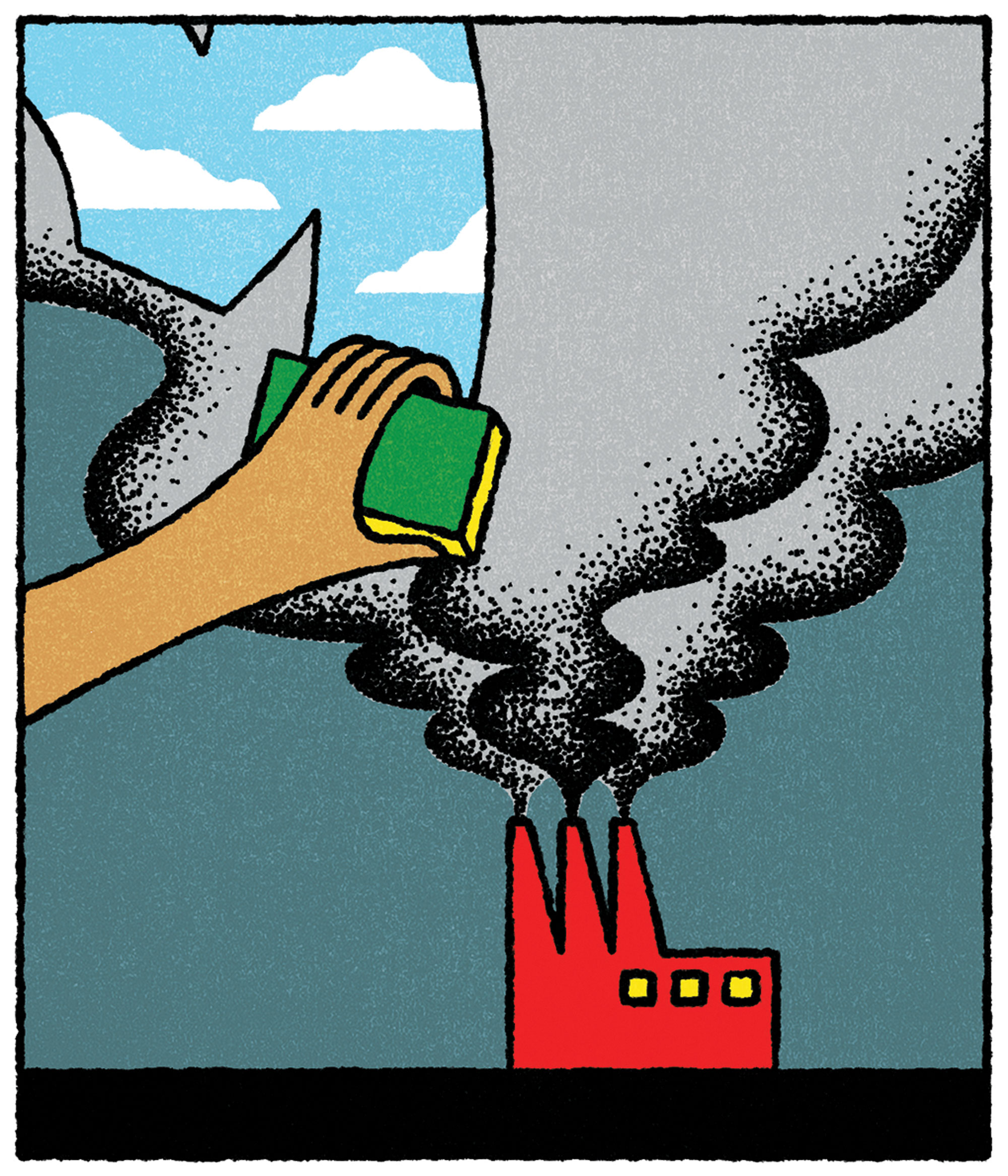
The Chinese government has implemented measures to clean up the air pollution that has smothered its cities for decades. Are they effective? A study coauthored by an MIT scholar shows that one key antipollution law is indeed working—but unevenly.
The study examines a Chinese law, in effect since 2014, requiring coal-fired power plants to significantly reduce emissions of sulfur dioxide, a pollutant associated with respiratory illnesses. Overall, the concentration of these emissions at coal power plants fell by 13.9 percent. However, the law also called for greater emissions reductions in more heavily polluted and more populous regions, and those “key” regions are precisely where plants may have been least compliant. Only 50 percent reported meeting the new standard, and remote data—as opposed to readings supplied by the plants themselves—suggests that the results were even worse.
“We see the lowest correspondence between sulfur dioxide reported by plants and independent satellite measures in key regions,” says Valerie Karplus, an assistant professor at Sloan and coauthor of a paper detailing the results. That includes coal-fired plants near such populous, economically well-off places as Beijing and Shanghai.
To conduct the study, Karplus and colleagues from the University of Colorado and Columbia University examined sulfur dioxide data collected by 256 plants in four provinces using continuous emissions monitoring systems (CEMS), sensor systems that capture concentrations of pollution in the waste gases emitted from power plants. They compared that data with NASA satellite data that remotely measures sulfur dioxide concentrations globally and in geographic detail.
Data from the two monitoring systems corresponded closely in “non-key” regions, where the maximum allowable concentration of sulfur dioxide was lowered from 400 to 200 milligrams per cubic meter. But in the key regions, where the limit was placed at 50 milligrams per cubic meter, the research found no evidence of correspondence.
That tougher standard may have been harder for power plants to meet. As the researchers noted in their paper, published in Proceedings of the National Academy of Sciences, “stricter new standards and pressure to comply may have generated incentives for plant managers to falsify or selectively omit concentration data.”
The fact that China not only uses but shares CEMS data is “a sign of real progress in environmental management,” Karplus says. But the satellite data is also vital to accurate monitoring—and isn’t subject to actions power plants might take to influence the results, such as incomplete reporting or manipulation of sensors. “Governments can and should use remote sensing data as a way of providing an independent check on the numbers they’re getting from emitters who are subject to a particular policy,” she says. “Satellite data could help to support central government ambitions to curb air pollution.”
Tightening pollution standards is necessary but not sufficient to achieving lasting reductions in pollution, Karplus says: “Environmental policy doesn’t exist in a vacuum. It requires reshaping prevailing understanding of firms’ environmental responsibility and establishing credible reporting systems. In China, there is still a long way to go, but recent progress is very encouraging.”
Keep Reading
Most Popular
Large language models can do jaw-dropping things. But nobody knows exactly why.
And that's a problem. Figuring it out is one of the biggest scientific puzzles of our time and a crucial step towards controlling more powerful future models.
The problem with plug-in hybrids? Their drivers.
Plug-in hybrids are often sold as a transition to EVs, but new data from Europe shows we’re still underestimating the emissions they produce.
Google DeepMind’s new generative model makes Super Mario–like games from scratch
Genie learns how to control games by watching hours and hours of video. It could help train next-gen robots too.
How scientists traced a mysterious covid case back to six toilets
When wastewater surveillance turns into a hunt for a single infected individual, the ethics get tricky.
Stay connected
Get the latest updates from
MIT Technology Review
Discover special offers, top stories, upcoming events, and more.